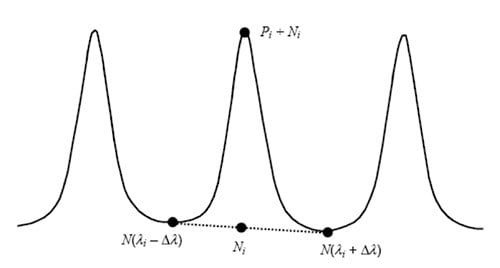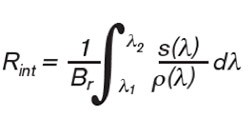New Standard from IEC: OSNR Measurements
The IEC recently published the long-awaited 61282-12 standard on OSNR measurements, Fibre optic communication system design guides – Part 12: In-band optical signal-to-noise ratio (OSNR). It includes key OSNR definitions applicable to latest technological advances, such as reconfigurable add/drop multiplexers (ROADM), and 100G+ signals.
So far, the main standard for OSNR was the IEC 61280-2-9. It describes a method to calculate the OSNR by measuring the noise level at the mid-point between channels, as shown in Figure 1, where P is the signal power, N is the noise power, and OSNR is equal to P / N, measured in a 0.1 nm bandwidth.

Figure 1. OSNR measurements based on the IEC 61280-2-9
Unfortunately, this standard cannot be applied on all types of signals. As the new IEC 61282-12 standard puts it, “three recent developments in optical transmission technology have now added complications to the OSNR measurement defined in IEC 61280-2-9, two of which have already been noted in Annex B of IEC 61280-2-9:2009.” These three recent developments are: “higher spectral density of signals”, “spectral filtering in wavelength-routing elements”, and “transmission of signals with multiple carriers.”
“Higher spectral density of signals” refers to the fact that “the transmitted signals are spaced closer together in wavelength and/or are modulated at higher symbol rates, where the latter results in broader signal spectra. Faster modulation rates and closer channel spacing often cause significant overlap of adjacent signal spectra, […] so that it becomes very difficult—if not impossible—to determine the ASE level between adjacent signals from a simple spectral analysis. Transmission of densely spaced DWDM signals, therefore, greatly reduces the usefulness of the interpolation method described in IEC 61280-2-9. Hence, there is a rising need for alternative methods to measure the in-band noise power spectral density (in-band OSNR measurements).”
“Spectral filtering in wavelength-routing elements” means that ROADMs will filter spectrally the signal, making it impossible to accurately determine the noise level from interchannel power measurements. Finally, “transmission of signals with multiple carriers” refers to superchannels, which will become common starting at 200G, and even more at 400G.
Accordingly, the IEC 61282-12 standard defines the spectrally integrated in-band optical signal-to-noise ratio OSNRint as the “spectrally integrated ratio of time-averaged spectral power density of a signal to the spectral power density of the amplified spontaneous emission (ASE), normalized to a chosen reference bandwidth. The spectrally integrated in-band OSNR, Rint, is calculated as:

Where:
s(λ) is the time-averaged signal spectral power density, not including ASE, expressed in W/nm
ρ(λ) is the ASE spectral power density, independent of polarization, expressed in W/nm
Br is the reference bandwidth expressed in nm (usually 0.1 nm if not otherwise stated)
and the integration range in nm from l1 to l2 is chosen to include the total signal spectrum. The OSNRint is usually expressed in dB as 10log(Rint).”
EXFO’s commissioning assistant is currently the only commercial product that complies this new IEC standard. To find out more, please have a look at the following white paper: 40G/100G/200G OSNR Measurements with a Pol-Mux OSA.




